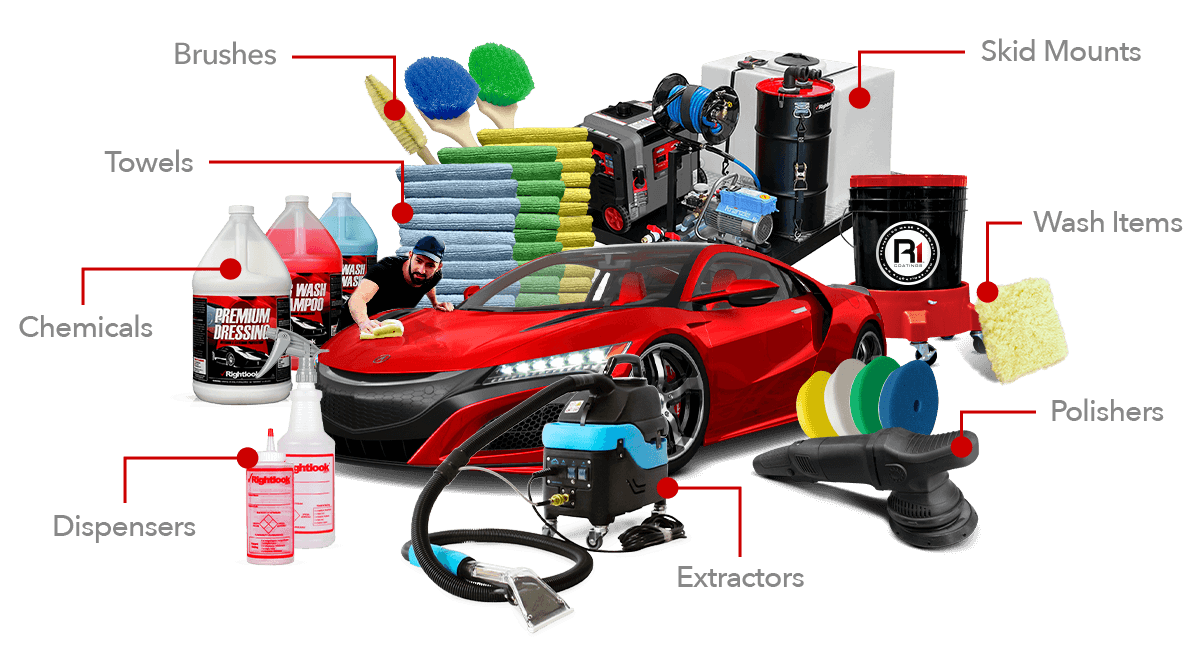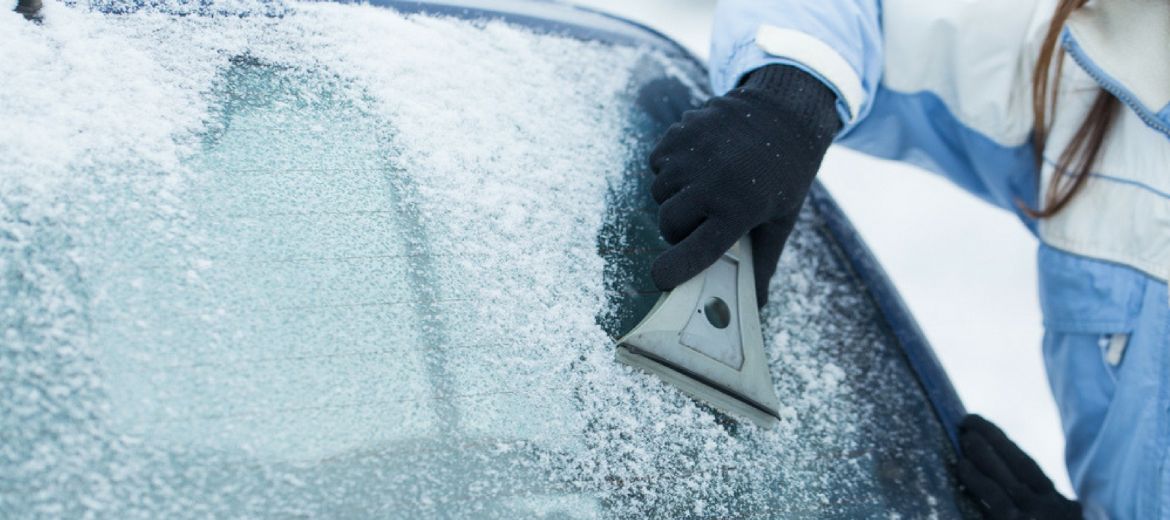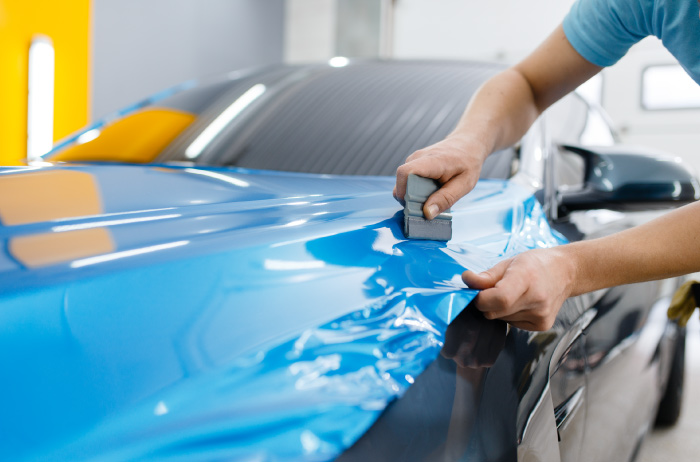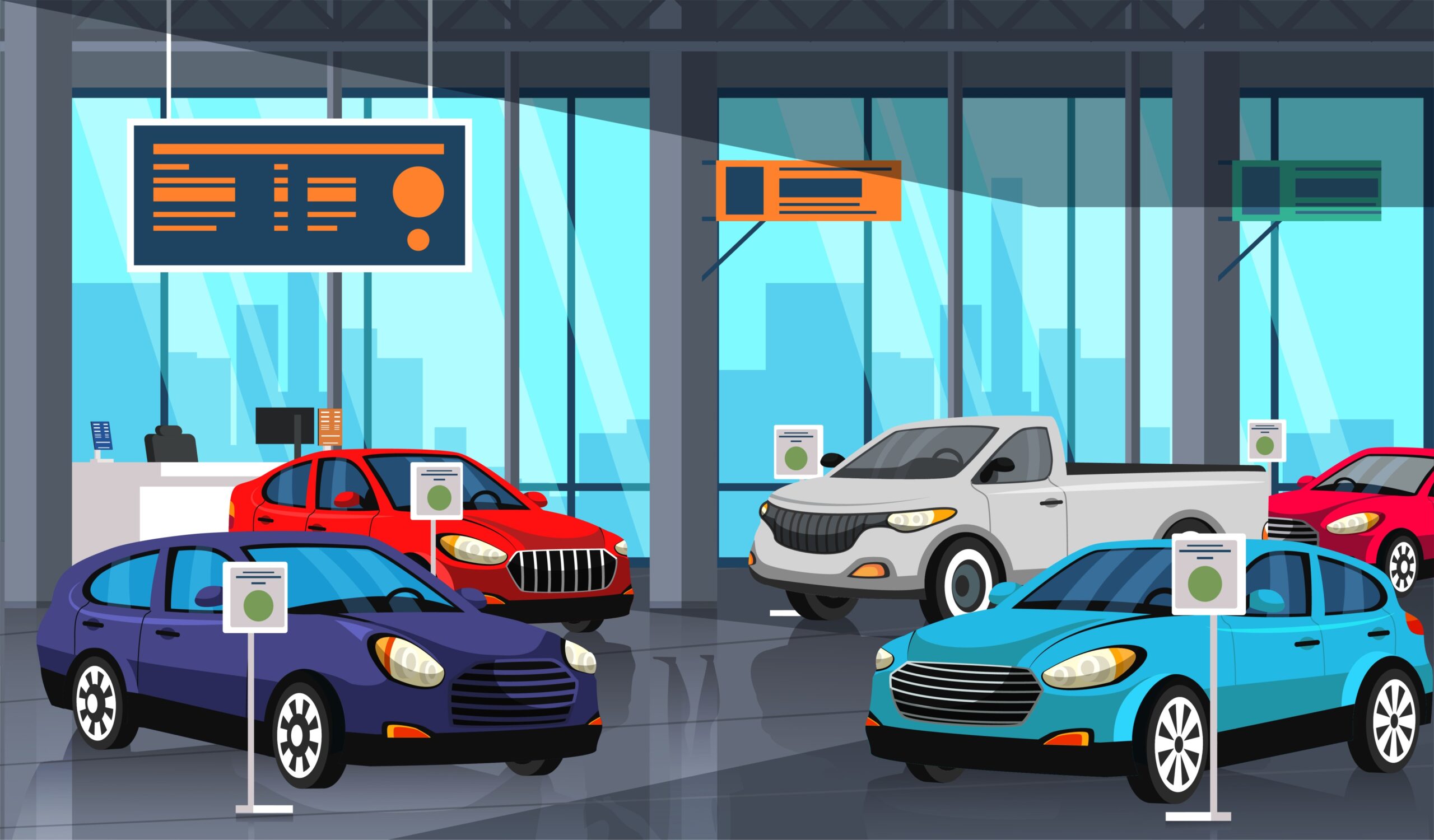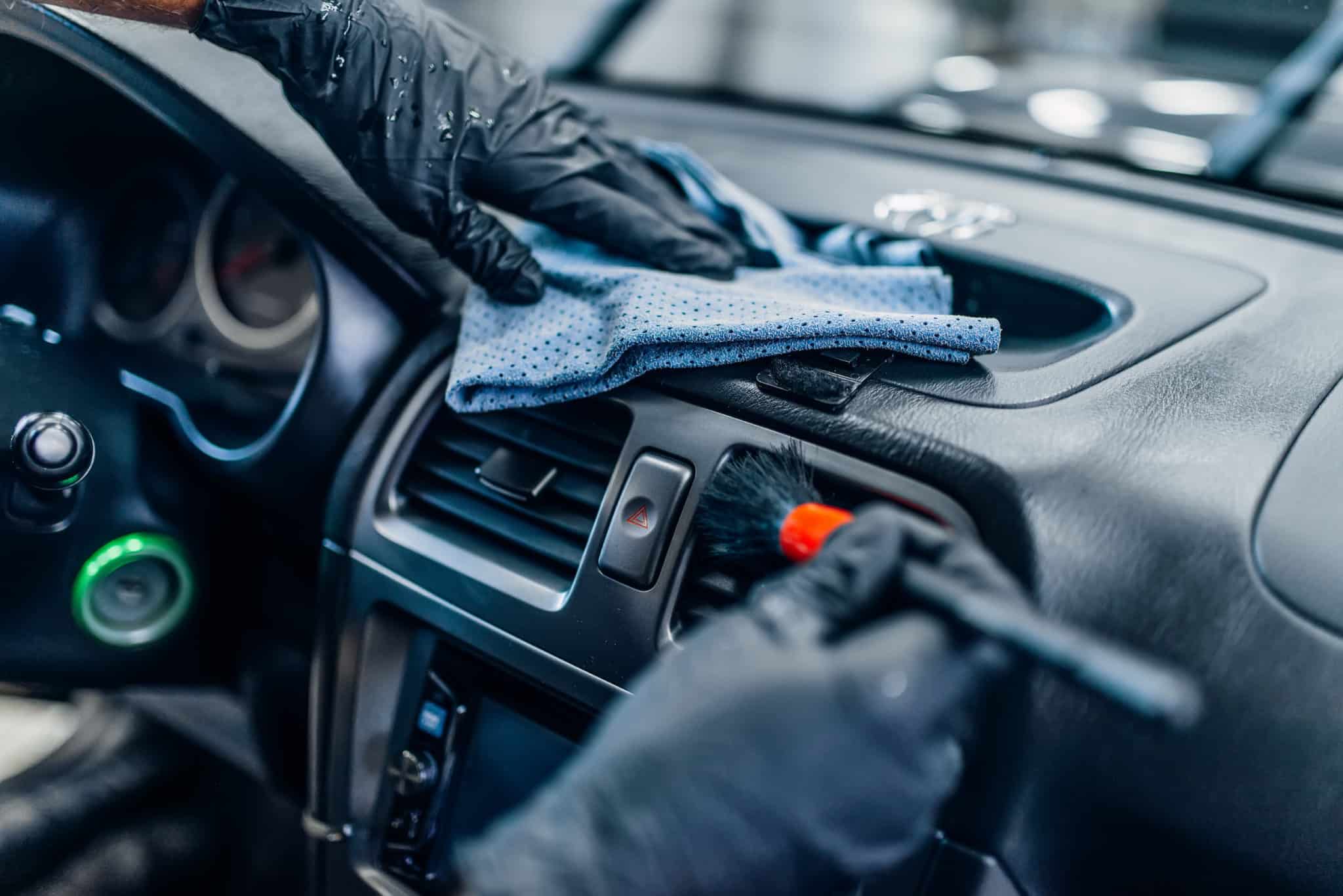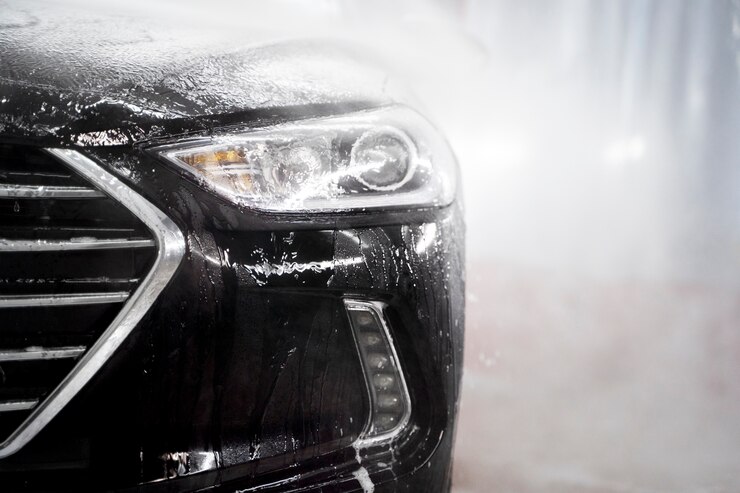Table of Contents
Using the Wrong Chemicals on the Steering Wheel and Pedals

The steering wheel and pedals are some of the most sensitive areas that you need to be very careful with.
Applying some products (usually for shine) that have oils in them will make the steering wheel and pedals slippery. You never want to do this, and this is both dangerous and uncomfortable when driving.
Imagine that you have a situation where you need to brake immediately and turn left. Now, let’s assume that the pedals and steering wheels are shiny and slippery because of the wrong product used.
You’ll end up in a traffic accident because there wasn’t enough grip for you to do this properly. Your foot and arms will just slip from those areas, and you’ll lose control.
Just clean the pedals and the steering wheel with the APC, and that’s all – except the middle area of the steering wheel – then apply some dressing over there.

Not Wearing a Protective Gear
Many people overlook this part. Even though we all think nothing could happen, it’s better always to protect yourself.
There are three most important things to wear:
- Gloves. Gloves are the most important thing, especially when detailing the interior of the car. You can get them in almost every shop in the world . Wearing them will avoid the dirt to stick to your fingers, palms, and even nails .
- Mask. The maskis also a great piece of equipment that will make sure you don’t inhale any bad odours or chemicals (for instance, when cleaning pedals)
- Glasses. Glasses are also essential to wear while doing with the chemicals for steering or pedals . There are always some particles that may end up in your eyes. Your health should always be in the first place. If would not be alert with this you may end up cleaning your eyes rather than the car .
Treating Only the Dirty Upholstery Areas
This often happens with upholstery cleaning foams, which are used to clean dirty upholstery. However, many people will just use foam on a specific part that’s dirty – and that’s okay in some situations.
If you just spilled coffee on your seats and you clean them immediately with foam – then it’s okay.
However, if you’re detailing the whole car that has many dirty spots – you shouldn’t clean only the dirty spots. You should clean the whole seat to get the best results.
Why? You’ll clean some areas that will become 100% clean, but the chances are that other parts will be dirty as well. And the end result will be pretty bad – the spots you cleaned will stand out a lot, which will make the seats look dirty again.
Using a Dirty Vacuum Hose
Using a dirty vacuum hose is nothing dangerous or can damage your car, but it will surely make you more work when detailing a car.
Vacuum hoses often drag all over the floor, which makes them dirty. When you stretch that hose from one side of the car to another, it will scrub the seats and make them dirty.
To prevent this from happening, we suggest you do the following:
- Wipe your vacuum hose with a microfiber towel before using it.
- Don’t stretch the hose from one side of the car to another. Work only on the side that your vacuum is on.
Not Letting Seats Dry Out Completely
Irrespective of how it happened – you left windows open in rain, you went through a carwash, your kid spilled coke all over it – wet car seats are a huge inconvenience. They get your pants wet, foster growth of mildew, make your car smell mushy, and if it’s winter, you get cold even through layers of insulation.
It’s quite literally a dampener for your date nights and late night drives. That’s why drying your car seats fast is essential. irrespective of how they got wet, the material they are made of, and the environmental conditions.
Using Stiff Brushes When Cleaning The Upholstery
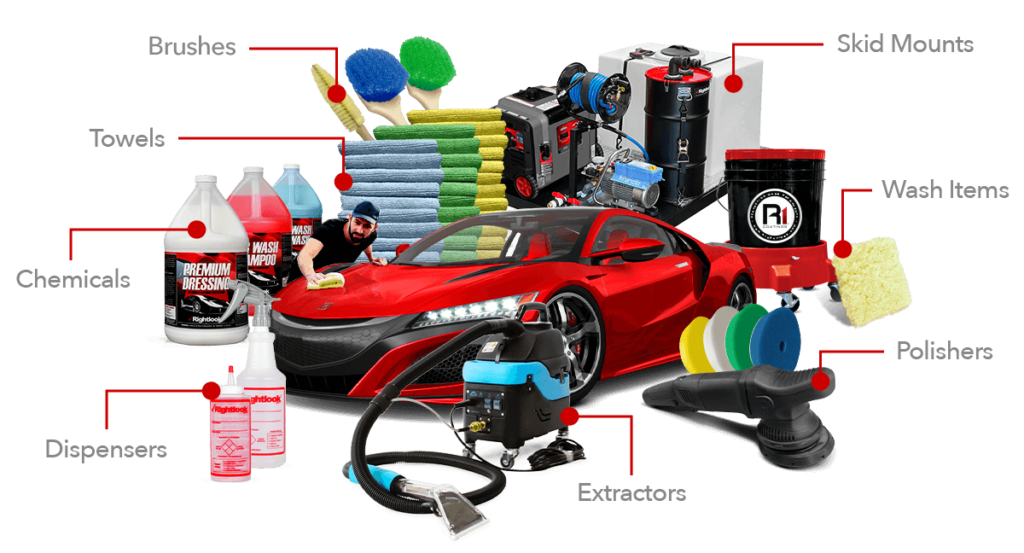
Stiffer brushes remove dirt quickly, right? Well, not exactly when it comes to cleaning cars.
Stiff brushes can’t enter so many pores in fabric, so a lot of dirt will be still trapped inside the fabric even after cleaning it. And even worse, stiff brushes will damage the upholstery, which may cause car seats and carpets to wear.
Mostly, brushes are color-coded, so you always know which has which level of softness.
I’ll show you which colour you should use:
- Red and Yellow brushes for carpets – these are very hard brushes and are good only for carpets.
- White brushes for the seats – white brushes are softer and will clean your seats without harming them.
Wiping Off The Interior Without Vacuuming It
Mostly, people make this mistake on the car dashboard. Some may think that it’s not very dirty and just wipe it off with some APC and microfiber towels.
If one just wipe off the interior without vacuuming it, one will be spreading dust and dirt all over the surface and probably make some minor scratches on the surface.
Always use a vacuum first; vacuuming all interior areas ensures there aren’t dust particles that can damage the interior. After that, use APC or interior cleaner and microfiber cloth to clean the surface entirely.
Using APC Everywhere
Even though APC is an all-purpose cleaner, which makes us think we can clean anything with it, it’s not always a smart decision.
APC is a great chemical, but I wouldn’t use it for the following:
- Cleaning the upholstery – there are specific chemicals for upholstery, and you should use them.
- Car exterior – APC is very strong and will remove waxes and sealants from the car paint, so don’t use it unless you want to get rid of wax on your paint.
Mostly, use diluted APC only on the car interior (dashboard, steering wheel, doors, plastics, etc.), and sometimes when washing the engine bay.
Diluting Products With the Wrong Ratio
This often happens with APCs and Upholstery Cleaners. People think that they should use stronger dilution ratios to get the best results.
Always follow the instructions on the product. Start with the weaker dilution ratio, then add more product if it’s insufficient.
Having a too strong product may cause damage to your car, and you’ll also end up spending the product way too fast – which isn’t profitable.
Harsh Avoid Products
1. Silicone dashboard protectants
You should avoid silicone-based dashboard protectants when cleaning the dashboard and similar surfaces. These solutions are popular in some circles because they leave a glossy finish, but this is actually a problem in practice.
Dashboards shouldn’t be reflective because they could shine light into drivers’ eyes, making it harder to see. This glare is a serious safety issue, with accidents in bright sunlight contributing to 5,000 more days in the hospital for car crash patients. Protect your customers and avoid glare-causing silicone protectants.
Opt for cleaners and protectants that produce a matte finish instead. Some people may not like the look as much, but it’s a safer alternative. It’ll also attract less dust, keeping it clean for longer.
2. Bleach
One of the most important things to avoid is bleach. This may seem obvious to some professionals, but bleach misuse is surprisingly common. In a 2020 survey, medical professionals found that 39% of Americans had misused bleach or similar disinfectants within the previous month.3
The temptation to use bleach-based cleaning products may arise when considering their potential as a stain remover. Some interior materials, like microsuede, can stain with just water, and bleach is a powerful cleaner.4 However, it’s often too corrosive and can leave stains of its own or permanently damage some materials.
Check your cleaning materials’ ingredients for bleach before using them. You may know not to use bleach itself, but you may not realize that other cleaners often contain the chemical.
3. Dish soap
Dish soap is another common cleaner you shouldn’t use on car interiors. These may seem fine at first because they’re safe for food surfaces and don’t pose any health risks. They’re also affordable and widely available, so it can be tempting to use them to keep costs low.
Dish detergent may be cheap, but it’s also harsher than what you need for car detailing. These products remove grease by design, but they often also take many car protectants with them. They may be OK to use once or twice, but repeated use could wear some fabrics and surfaces down until they start to degrade.
You should avoid dish soap in any capacity on car exteriors, and it’s best to go by the same principle for interior detailing. A small amount may be fine, but the risks of repeated or excessive use outweigh the benefits.
4. Ammonia-based glass cleaners
Another common class of cleaning product to avoid is glass cleaner with ammonia. Many household window cleaning solutions contain the chemical, albeit in low percentages. The amount of ammonia in them poses only minimal health risks, but it’s not suitable for car interiors.5
Like many other products on this list, ammonia is too harsh for a car’s unique considerations. Spilling or dripping it onto the car’s upholstery could damage it and create unpleasant smells. It may also degrade the windshield’s tint or anti-glare coating, leading to safety concerns when driving.
Ammonia-based glass cleaners will also affect the car’s touch and control panel screens. These devices may become less responsive or difficult to see as the ammonia wears away at their protective coatings. Avoid these undesirable outcomes by double-checking your glass cleaner to ensure it’s ammonia-free.
5. Alcohol-based products on leather
Some products are perfectly suited for some parts of an interior detailing job, but not all products. That’s the case with alcohol-based cleaners. Alcohol is generally a gentle and effective chemical on most surfaces, but it can damage leather seating.
Alcohol can ruin the urethane coating that most leather seats feature.6 Wiping this protective layer away will expose the underlying material to heat, air and other contaminants. Consequently, it could get dirty, harden or crack over time, ruining the customer’s interior.
This applies to real and imitation leather. Opt for dedicated leather cleaners instead, and, as with other products, check the label to ensure they don’t contain alcohol. Alcohol-based cleaners can be safe and effective if you’re not dealing with leather, though.
6. Naphthalene
Some cleaning products to avoid when detailing interiors not only pose risks to cars, but to your health as well. For example, naphthalene can endanger your health, so it’s best to avoid it for your own sake. Naphthalene doesn’t appear in many cleaners, but it’s still present in some, so check your labels to ensure you don’t use it.
Naphthalene is perhaps most well-known for its role in mothballs, but some carpet cleaners, all-purpose cleansers and other detailing products contain it too. Immediate exposure to the chemical can cause eye and throat irritation and may make your skin itch.7 However, most risks come when using these products over time.
Prolonged exposure through skin contact or inhalation can cause anaemia. It can also cloud your eyes, damaging your vision. It’s best to avoid the chemical altogether to protect your health and that of your employees.
7. Benzene
Another type of product to avoid for health reasons is cleaners containing benzene. Benzene is an ingredient in some detergents, dyes and lubricants, so you may encounter it when selecting cleaning products. This chemical is fairly common but can pose serious health risks.
Benzene causes cells to not work correctly, resulting in several issues. They can range from anaemia to white blood cell loss, affecting your immune system. Long-term, repeated exposure can even cause leukaemia.
Most benzene poisoning happens through inhalation. They are easier to breathe in when working in a cramped car interior. Benzene is becoming less common in standard cleaners, but it’s still worth looking out for to avoid.


